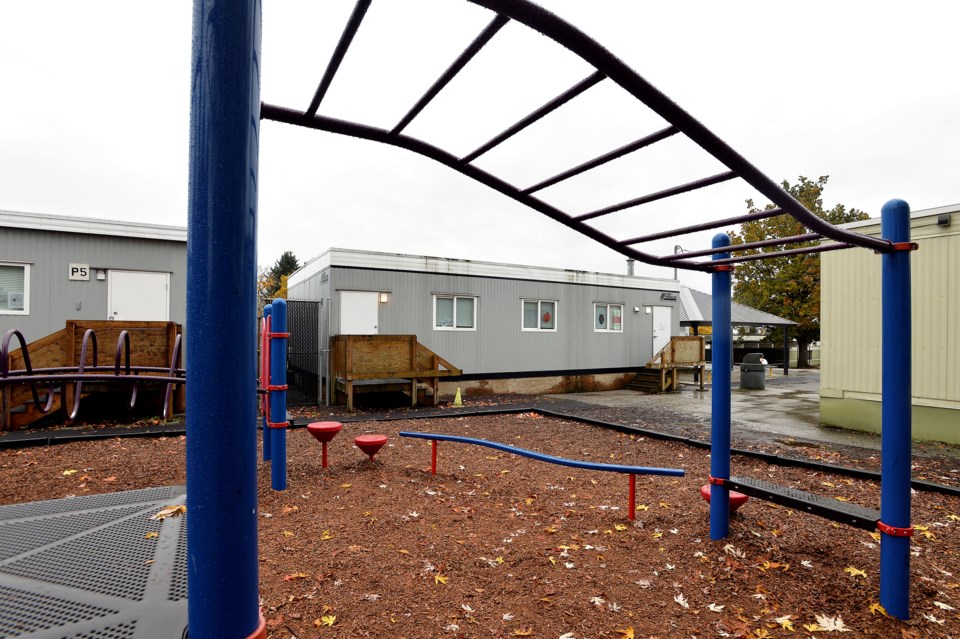How can you build big enough schools in a city that’s short on land?
That’s one of the challenges facing the New Westminster school district, as outlined in its newly adopted long-range facilities plan.
The document shows School District 40 would need 31 more acres of land just to meet provincial standards for its school sites – and that’s not counting future enrolment growth.
Eleven of the district’s 12 school sites are below the provincial area standard based on their approved capacities. The only one that isn’t? F.W. Howay Elementary School, in Massey-Victory Heights.
Of the other 11, the site with the biggest land shortfall is Glenbrook Middle School. At just 1.4 acres, the school site is more than 6.3 acres short of the area standard. Its crosstown counterpart, Fraser River Middle School, is 3.6 acres short.
Among elementary schools, Qayqayt suffers the biggest land deficit, at 3.7 acres short of standard. That’s followed by Queen Elizabeth (3.38 acres), Herbert Spencer (3.16 acres) and Lord Kelvin (2.95 acres).
Bettina Ketcham, the school district’s secretary-treasurer, noted in an Oct. 12 presentation to trustees that the district’s “undersized” school sites pose challenges in a rapidly growing district like New Westminster. She pointed out the existing properties aren’t large enough to add more capacity to schools – either temporarily, through portables, or permanently, via expansions.
She said the district faces “geographic constraints” because New Westminster is such a small municipality in terms of land size.
“New West is unique in that way. We have a lot of neighbouring jurisdictions and municipalities that might have pressure when it comes to enrolment, but of course not quite the same pressures (when it) comes to area standards with green space,” she pointed out.
Ketcham noted the school district has been able to “counterbalance” that lack of land by building schools next to city parks – such as at Glenbrook Middle School, which adjoins the playing field and playground space at Terry Hughes Park.
“That’s been a blessing,” Ketcham said. “But as we go through a period of rapid growth, that is a bit of a challenge at this time.”
Rapid downtown growth puts the squeeze on schools
That challenge is most heavily felt in areas with rapid population growth, which corresponds to higher school enrolment.
Right now, that means downtown New Westminster. And that means the school district has its immediate attention focused on the Fraser River zone – encompassing Fraser River Middle School and its feeder schools, notably the over-capacity Qayqayt (in the heart of downtown) and Lord Kelvin elementary schools.
“We are challenged for space, especially when it comes to Qayqayt Elementary having very small greenspace that’s located adjacent to the school,” Ketcham said. “It is owned by the district; however, to service 550 students, it is quite a small field space.”
The district has similar challenges at Lord Kelvin, which has taken on multiple portables to accommodate its growing enrolment.
As of July 2021, the district had 40 portable classrooms in use. Of those, five were at Qayqayt (all for classroom space) and another six at Lord Kelvin (five classrooms and one child-care room).
The school district is looking for the funding for both a new middle school and a new elementary school in the central/western portion of the city to find a more permanent solution to the space squeeze. It’s put those requests in its five-year capital plan for the Ministry of Education.
Follow Julie MacLellan on Twitter @juliemaclellan.
Email Julie, [email protected].




